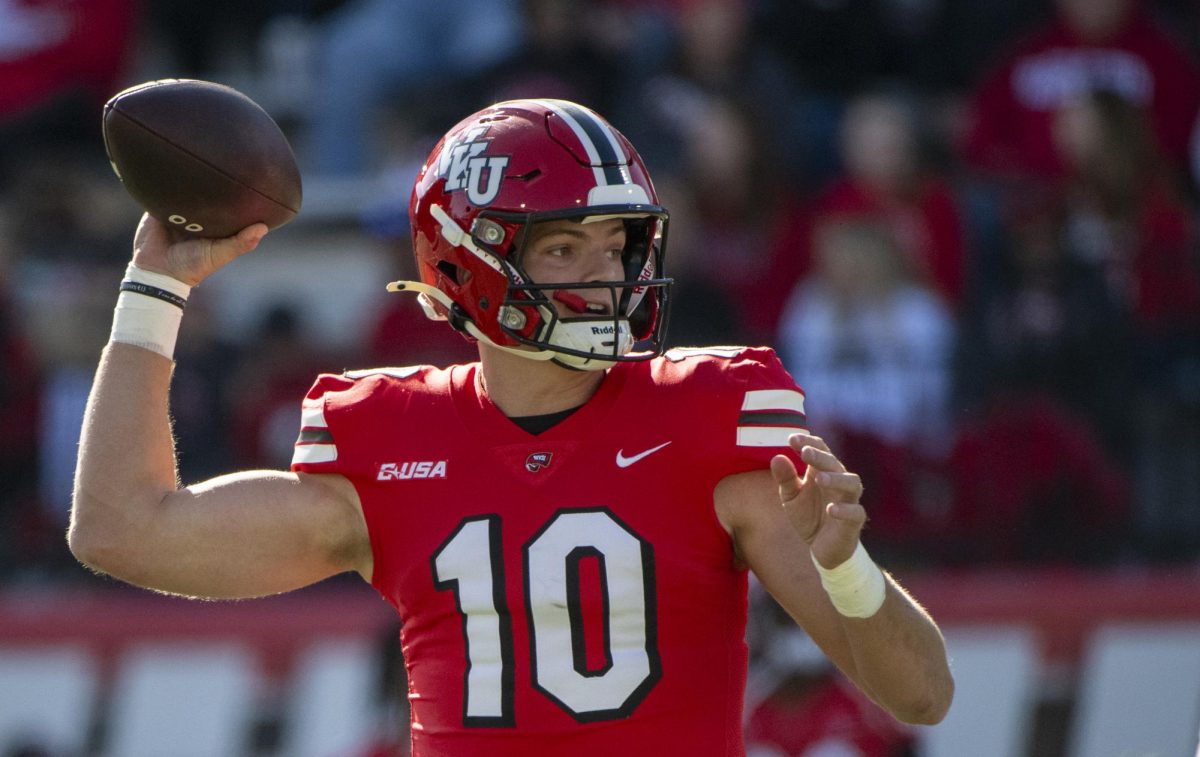Exhibit commemorates Kentucky during WWI
September 6, 2017
THE ART OF WAR
When the U.S. got involved in the First World War in 1917, George Dewitt Harris, an attorney with a practice in St. Louis, decided to serve in the U.S. Army. His brother, Downey Lamar Harris, a physician, worked in the Medical Corps during the war.
George served in the army because he was single and “because he believed in the idea that this war would be so awful that it would end wars forever,” his great-nephew, Tom Moody, said.
Moody, who lives in Franklin, Ky., has been an organist at The Presbyterian Church of Bowling Green for 50 years. Moody donated many family pictures and the Harris brothers’ letters to WKU’s Department of Library Special Collections, located in the Kentucky Building.
The department put up a World War I exhibit in the Jackson Gallery of the Kentucky Building on Aug. 1. The exhibit is free for both students and guests to view from 9 a.m. to 4 p.m. Monday-Saturday through Dec. 8.
This year marks 100 years since the U.S. got involved in World War I. The exhibit is meant to commemorate the Kentucky soldiers who fought in the war and the war effort in the U.S., said Jonathan Jeffrey, head of the Department of Library Special Collections.
“We really wanted to not celebrate, but commemorate World War I and Kentuckians’ involvement in it,” Jeffrey said.
The exhibit consists of seven cases, and each case has a specific theme or focuses on a particular individual or family. Most printed materials showcased were donated to Library Special Collections, and the other materials are from the Kentucky Museum.
One case includes a display of pamphlets and other papers distributed from the U.S. Food Administration encouraging U.S. citizens to limit their consumption of food products such as wheat and sugar, which the U.S. sent to soldiers. The case is an example of how the U.S. supported soldiers during the war, Jeffery said.
Another display of U.S. involvement in the war effort on the home front is a case displaying how the war affected families. The case includes a doll in uniform, pictures of children in uniforms and sheet music. There is also patriotic sheet music on the wall space in Jackson Gallery.
There is a case featuring the Harris family and the letters the brothers sent home. George was wounded in Epionville, France, after a piece of shrapnel broke his jaw while he was trying to help a wounded commander on Oct. 7, 1918, Moody said. George died a week later and was buried in France.
Eventually, his body was sent to New York, and Downey went to New York to identify the remains of his brother’s body.
Moody said he feels proud to have his family featured in the exhibit.
“I feel honored, for one thing, and then humbled by it all because memories are important, and sacrifices are important,” he said.
One case features information on the largest of 16 cantonments to train soldiers in the U.S., which was Camp Zachary Taylor in Louisville. It was built in 90 days and consisted of 2,000 buildings and over 40,000 troops. It closed in 1920. Jeffrey said one of the buildings still stands today. Jeffrey added that soldiers were also trained at WKU.
Another case provides information on Victor Herbert Strahm from Bowling Green, a U.S. Air Ace during World War I. He was the son of a German immigrant, and he attended WKU. He helped facilitate the Normandy D-Day invasions and served in the Air Force in World War II, Jeffrey said.
Other cases in the exhibit feature a uniform, a map and liberty bonds that provided funding for the war effort.
“Our main point in trying to have individuals highlighted in this exhibit is to show that wars involve millions of people, and it all boils down to one person at a time being involved in that effort, whether as a service person or on the home front,” Jeffrey said.
Breanna Harris, a second-year graduate student from Alvaton, helped Jeffrey plan the exhibit through an internship, and Jeffrey said he is pleased with her work.
“I was really thrilled. She was very good. She did a really good job. She was very meticulous and kept good records,” he said.
Harris got the internship as part of her course work in the history department when she was a senior. Jeffrey was her internship supervisor.
Harris said she helped plan what would be in each case through collaboration with Jeffrey. She said she feels Kentucky played an important role in World War I.
“We couldn’t have contributed to the First World War without Kentucky citizens,” she said. “Kentuckians played a big role in not only fighting in the war, but also the food production aspect and the whole home front situation as well.”
Reporter Olivia Mohr can be reached at 270-745-2655 or [email protected].











